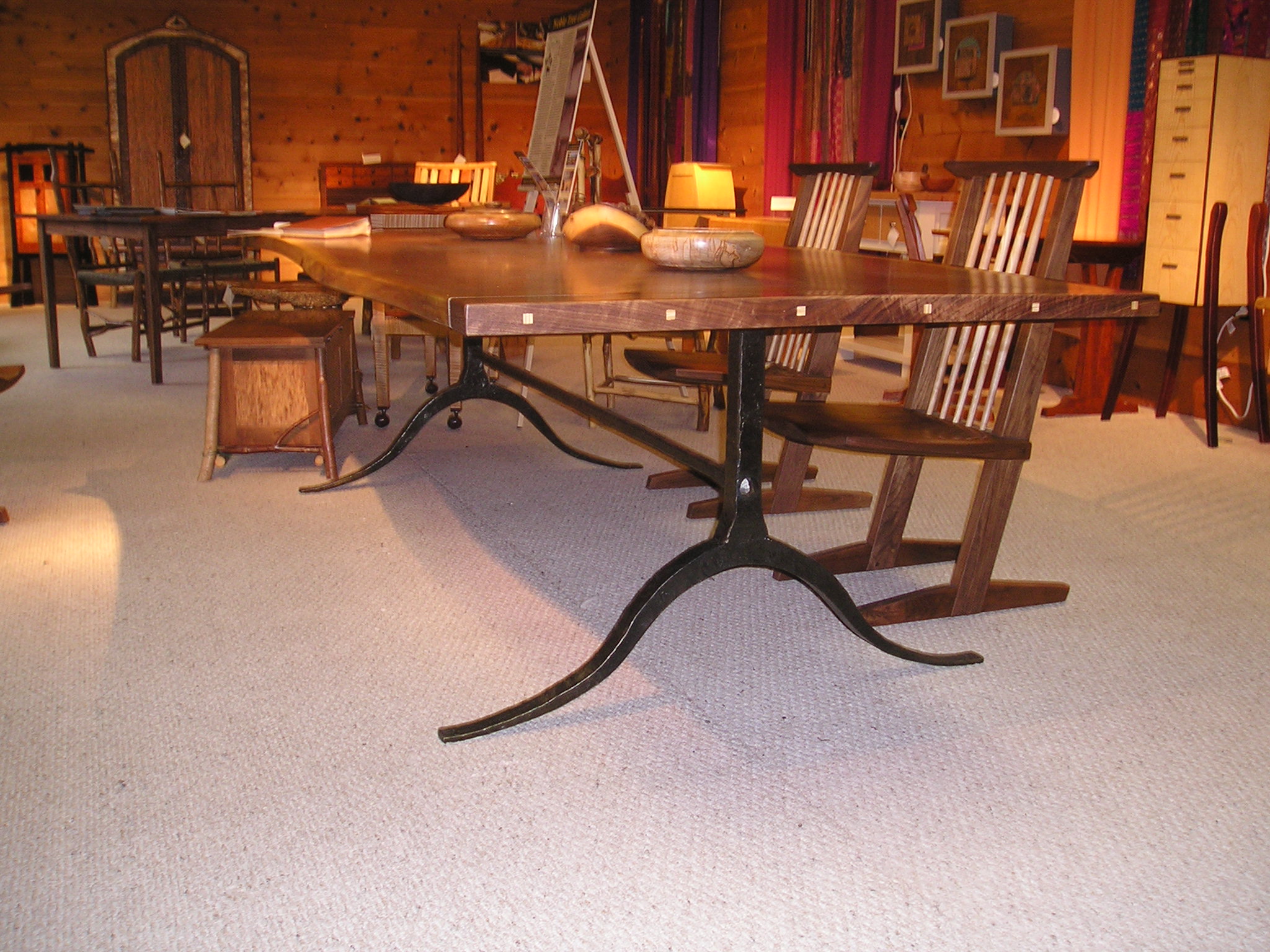Question
I was wondering if anyone has any input on the Sauno wood kilns? It looks like a nice way to do small scale kiln drying. I have access to a lot of highly figured wood for reasonable dollars and will mill it myself. I have a Logosol M7 and a slabber. The picture below is an example of my work. The top is a 4'X8' chunk of black walnut.

Forum Responses
(Sawing and Drying Forum)
From contributor G:
I note from its manual: "Please note that oak must be seasoned outdoors at least half a year in order to get rid of the corrosive acids that could destroy the aggregate." It seems to be little more than a steam generator used mostly as a heat source and occasionally (?) as a stress relief steamer.
Using your beautiful table as an example, I note that black walnut sapwood can be evened out by steaming. The cost is a total loss of all those wonderful highlights in walnut - the subtle variations in the redís and other colors that you see in the wood. Steaming, while it does darken the sapwood, renders the whole wood a nasty evenly bland brown. I think you would be happier with a dehumidified kiln which, on the other hand, does not damage the color and generally works at a lower temperature so that the stress the steam could relieve doesn't happen in the first place.
The unit seems underpowered given the very slow heating rates given. That may be untrue or pointless for you however. I also note that the site you sent us to suggests that it can properly dry 100mm lumber in five weeks - perhaps some softwoods, but that seems unlikely in oak, cherry and walnut. Perhaps I miss the point somewhere and someone who actually has one will speak for it.
As a special note, concrete in a kiln should use river rock and not limestone when drying lumber to avoid deterioration of the limestone. Of course, insulation of the floor, roof and walls of any kiln is a good practice to save energy. It seems that the Sauno kiln is indeed well insulated.
Generally we would not think that oak thicker than 5 mm can be dried in six months, so the idea of 10 mm oak being air dried in six months is questionable. In fact, 12/4 is nearly impossible to dry conventionally. Even 4/4 is questionable if stacking in October in the north; it would not be very dry by April 1. I also agree that 10 mm of most species cannot be dried in the short time indicated.
Note that oak is seldom dried over 130 F (45 C). I think that the literature talks about 75 C. That seems too hot for oak and many white colored woods. Using this equipment for American hardwoods may take some development; the picture is a softwood, which can take this heat and would not require close control of drying conditions for good quality. One of the big problems in our industry is that the consumer of furniture and cabinets and flooring is buying from overseas. Too bad they didn't but American, as our industry and lumber prices would be so much stronger. Does the same concept apply to buying non-American equipment versus American?
Acetic acid vaporizes at warmer temperatures, but not all is removed when drying, especially air drying. Tannic acid does not vaporize as easily, so very little is found in the air or in condensed air when drying. Although the acetic acid does vaporize, when it hits something a bit cooler than the wood, it will condense. In fact, it is not unusual to see water condensation in a kiln too. Due to acetic acid and any other trace amounts of other acids, this water condensation will be low in pH; 3.5 is found often. Condensation is more likely when operating at cool temperatures and high relative humidityís, and it is cold outside. Very little damage will occur at high temperatures with low humidityís as the surfaces in the kiln are not cold enough to permit condensation. On the other hand, there can be spots cold enough within a wall; hence we try and seal the interior of the kiln walls so that vapor cannot move into a wall and hit a cold spot. In other words, condensation can occur on the floor surface or in the interior of a wall. If in the interior of the wall, the condensed liquid is likely to stay there for a long time and do a lot of damage. We do suggest that a floor be insulated so that it will not be as cold and therefore less likely to have condensation. We have noted that bacterially infected wood is more acidic than uninfected and that the acids also seem more corrosive. Acetic acid does indeed react with lime; in fact, all acids will. In fact, even aluminum will corrode when the pH is low enough. Acetic acid is found in oak.
When steaming into a kiln, the steam itself is 100% water. However, the boiler water needs to be high corrosive (pH = 11 or so). If the boiler ever burps and high pH boiler water gets into pipes and even into a kiln, damage to the structure can be severe. For this reason, we use traps and other design features to avoid this happening, but if the boiler pressure drops excessively (due to lugging the boiler or overloading it), the risk of high pH water into the pipes and kiln is high. The risk is high with small boilers; large boilers have lots of prevention techniques.